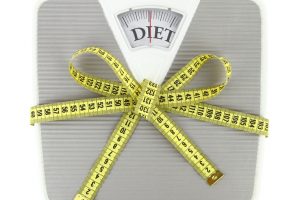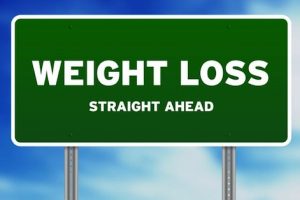You have just ended your weight loss diet, you had a difficult time but had immediate results: Lost 6 pounds in 2 weeks … Now you think that you can start eating normally like “a person” and you do not need to continue the gym, since the weight loss objective was achieved.
Attention! If you do that, then in less than 6 months you will probably get all the weight you lost and maybe 1-2 more. Most importantly, if you start the weight loss diet again, which is the most likely, it will be more difficult to lose your unnecessary weight.
The scenario just described, is knowledgeable to people who are trying to lose weight and see that, while they lose weight at the beginning, after a while they get their weight back, which turns them to start a new diet, so the vicious cycle is perpetuated.
This is the «yo-yo phenomenon», and because of that it is difficult to maintain the new weight after the diet. This article provides tips for effective weight loss and explains what is the Yo-Yo phenomenon and how to avoid it, so as to break the vicious cycle of changes in weight.
The yo-yo phenomenon, known as «recycling» of weight loss concerns weight loss and the weight gain. These changes in weight may be small (around 3-5 kg each time), and larger (e.g. 10 or more kg). In the latter case, the recurrent weight fluctuations affect not only your mood but also your health. Although not all studies agree on the consequences of «recycling» of weight on health and the precise mechanism of this phenomenon, but some of them indicate that increases the risk of developing hypertension, even when they concern «recycling» just 5 kilos.
Also, some studies associate the yo-yo phenomenon with the weakening of the immune defence system. In other words, the experts tend to come to the conclusion that it is better to maintain your weight, even if this means having a few extra pounds, rather than going through rapid weight loss and regain the weight later.
What is the problem with weight loss diets?
The wrong choice of weight loss solutions may be the main reason for the Yo-Yo phenomenon. In other words, the change of weight occurs mainly when the deprivation diet is very strict and is aimed to lose weight fast.
The nutritionists point out that the rapid weight loss makes us more prone to the rapid reinstatement. Why is this? Because when you lose weight fast (more than 1 kg per week), then the largest «victim» of weight loss is muscle tissue and fluids of our body. The more rapidly we lose weight therefore, the more we lose muscle tissue.
Conversely, the loss of fat is less than 70%. If for example we loose 10 pounds, then we will lose substantially less than 7 pounds of fat. On the other hand, loss of muscle tissue is around 10% (the percentage very roughly corresponds to half a kilo of muscle and is considered very high). The muscle tissue is necessary to maintain the basic metabolic rate (i.e. the calories we burn for the normal operation of our organism). The more undernourished are the muscles, the fewer calories we burn.
So, if the combustion of the body is reduced, it is more difficult to maintain weight and this increases the chances of re-gaining the lost weight. Moreover, deprivation diets undermine the effort to maintain the weight in another manner. Because they are strict diets, after we have completed them we have the strong desire to eat what was «forbidden» by those diets.
The custodial syndrome created increases the consumption of foods, particularly those rich in calories and fat, leading quickly to retake the lost weight.
Why after a weight loss diet you end up with more fat?
When you get back the lost weight after a fast and miraculous weight loss diet, the scale again shows you 10 pounds heavier, but with one important difference: this time we have more fat (for example, while we lost 6 pounds of fat and 4 pounds of fluid, now we have “gained” more than 7 pounds of fat).
As experts explain, when the body is re-gaining weight it tends to store more fat than the quantity lost initially. In other words, the composition of our body weight is changing. Accordingly, each time we recover the lost weight, we increase the percentage of fat in our body.
Indeed, according to surveys, it appears that fat is increasing in the abdomen, which is associated with greater risk of heart disease and diabetes. This phenomenon makes any subsequent effort to effectively lose weight more difficult because fat burns very slowly.
How to avoid the yo-yo phenomenon?
Five steps to avoid the yo-yo phenomenon:
1. Start slowly with small weight loss. When you start a weight loss diet set a target to lose up to 1 kilo per week (or, more accurately, 1% of our weight per week and no more). Obviously, this target excludes deprivation and strict diets.
2. Gradual reduction of calorie intake. It is recommended to gradually reduce the calories we consume, so that our organism does not consider that you are undernourished (in this case the reaction of our body and if it seems strange, is to protect the fat … and to «burn» the muscle tissue, because of course it has already exhausted the reserves of carbohydrates).
Through the gradual reduction of calories, we are thus protecting some precious muscle tissue (if you find this step difficult, you can seek the help of a dietician).
3. Follow a diet without bans. It is very important that the diet does not prohibit the consumption of any food group. In this way you avoid the custodial syndrome, which can lead to regain the lost weight.
4. Physical Exercise. Exercise during diet protects and strengthens the muscular system by preventing a significant reduction in the basic metabolic rate. Of course, this does not necessarily mean that we should go to the gym. Any type of physical exercise that increases heart rate and stimulates the muscles is welcomed (eg walking, cycling, swimming).
The most easy and practical is to walk in a quick pace for 30 minutes a day. Indeed, the combination of diet with exercise is considered the secret to maintaining the new weight. Practically, this means that we need to continue physical activity even after the diet; we need to place it in our daily routine.
5. Regular weight control. After completing the diet, you should manage your weight on a weekly basis (not necessarily in the scale, but also with our own clothes, for example, if you squeezed to enter your jeans, whereas before it was more comfortable). The objective of self-control is to «avoid» gain weight beyond the reasonable limit of about 2-3 kg. If this happens, then we must go back to a more careful weight loss solution, until returning to the desired weight.
Some facts why weight loss diets fail:
90% of those who re-gain their weight after a weight loss diet, ie those who fall into the trap of the Yo-Yo phenomenon, make similar nutritional mistakes:
They are starting to eat like before the diet
They forget breakfast
They eat many fatty snacks between meals
They do not eat fruits and reduce salads
They stop any physical activity.
Conversely, those who manage to achieve effective weight loss typically they combine a weight loss diet with physical activity but most importantly they continue to consciously watch their diet and exercise consistently.





